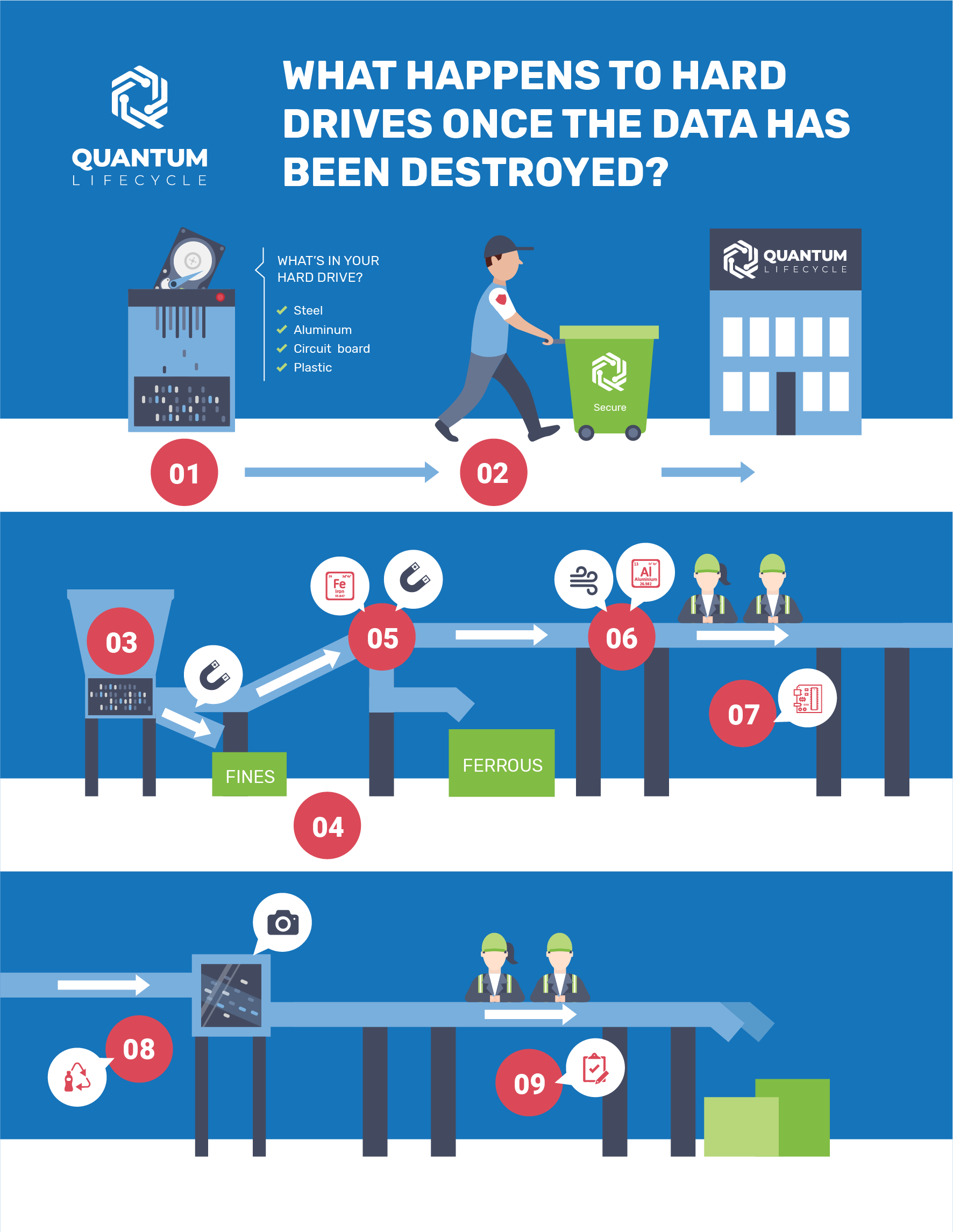
Have you ever wondered what happens to the shredded bits of hard drive generated through Quantum’s Enhanced Data Destruction Process? Not only is the process secure, but it’s good for the environment too.
Step 1
Hard drives are fed into Quantum’s NIST-certified hard drive shredder that spit out a 3/4” or smaller particle size, meeting RCMP and DoD-data destruction requirements. Onsite or offsite, once your hard drives are shredded, your data is destroyed forever.
A shredded hard drive consists of various commodities such as steel, aluminum, circuit board and plastic, all of which are 100% recyclable.
Step 2
Once enough shredded hard drives have been accumulated, we transfer the material for final processing.
Step 3
The shredded hard drives are loaded into Quantum’s massive four shaft shredder, taking the hard drive pieces and reducing them into even smaller pieces.
Step 4
Now it’s time to start separating the various commodities. The shredding process generates what are called “fines” and the first separation that occurs is via a magnet that pulls the ferrous fines from the non-ferrous fines. Fines are similar to coarse sand in consistency and fall through a screen in the shredder leaving bigger pieces for additional sortation. As fines are relatively high in precious metal content, they are sent downstream for refining.
Step 5
Another magnet pulls out the bigger pieces of ferrous metal, throwing them onto a different conveyor and into a container destined for the local steel mill. Steel is one of the least valuable metals, but is easily and infinitely recycled. Additional sorting in the form of manual labour ensures a high degree of purity.
Step 6
The remaining materials basically consist of plastics, copper, aluminum and circuit board. Copper and aluminum are what are known as non-ferrous metals, meaning they are not magnetic. This makes sorting them challenging, which is why we employ what’s called an eddy current to help the process. Eddy currents apply an electrical charge to the metals causing them to become temporarily “magnetized” and to jump off the conveyor into a new stream.
Step 7
The remaining material is sent down two separate conveyors – one containing mostly plastic with some circuit board and one containing mostly aluminum and circuit board. Circuit boards represent the single highest value item in a hard drive so we want to isolate them for precious metal recovery. This is achieved via a series of hand sorting stations.
Step 8
As the shredded hard drives makes their way down the line, the bigger pieces get sorted out leaving smaller and smaller bits which are too hard to sort manually. Quantum uses an automatic sorting system known as an optical finder. This machine sends material flying down a conveyor at high speeds taking several thousands of photos a second which measure the size, shape, colour, density and location of the various bits as they travel down the conveyor. As the materials fly off the end of the conveyor, one of over a hundred air jets will fire, sending a particular piece either flying or falling, achieving separation of the remaining metal from the plastic and from the circuit boards.
Step 9
A final manual sortation is performed to achieve the highest level of quality possible. Material can also be reintroduced at any point in the process if it needs additional sorting. The final product consists of copper, steel, aluminum, plastic and circuit board. Each commodity is sent to an approved and verified downstream vendor for final refinement into a raw commodity for use in any number of products.